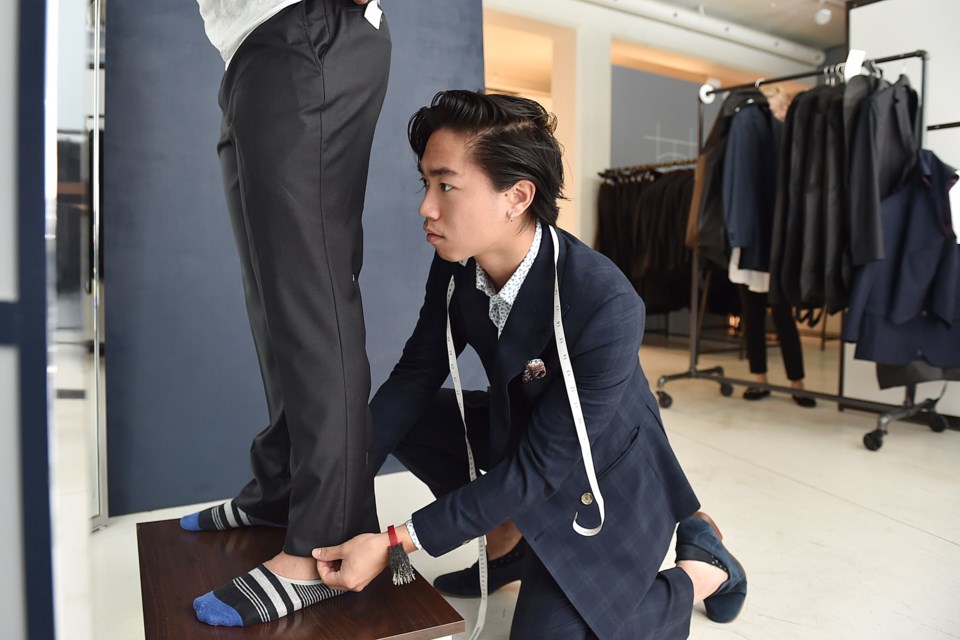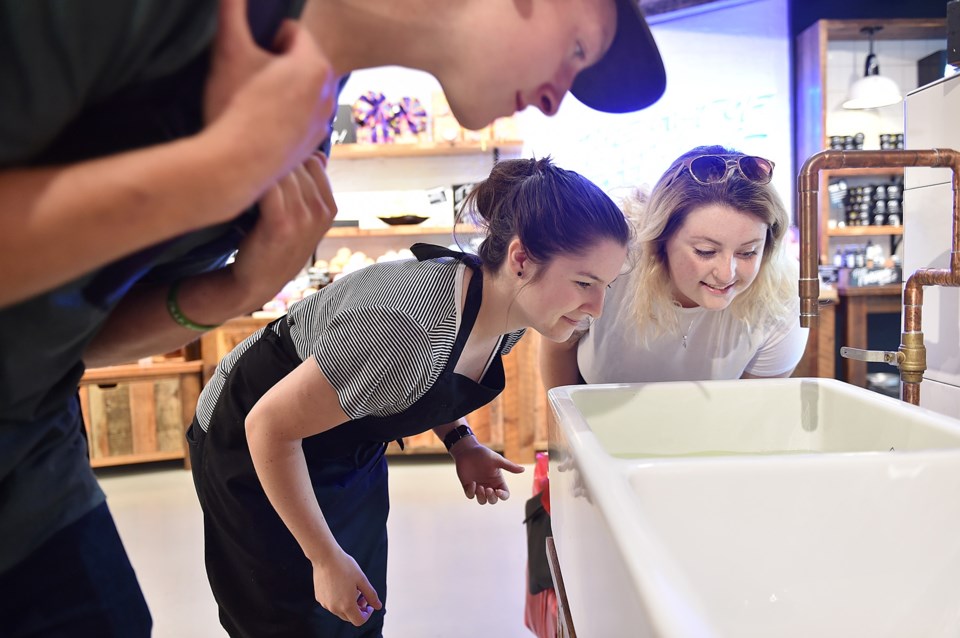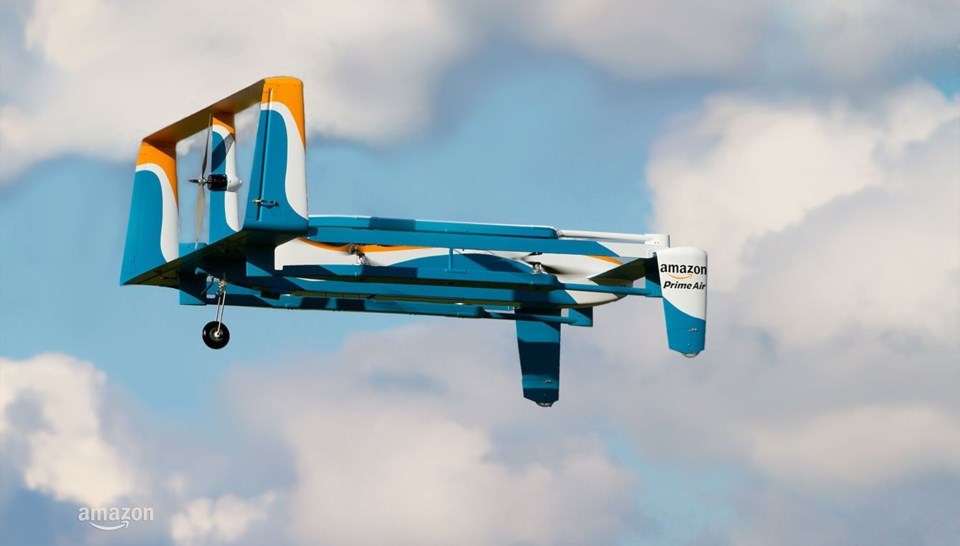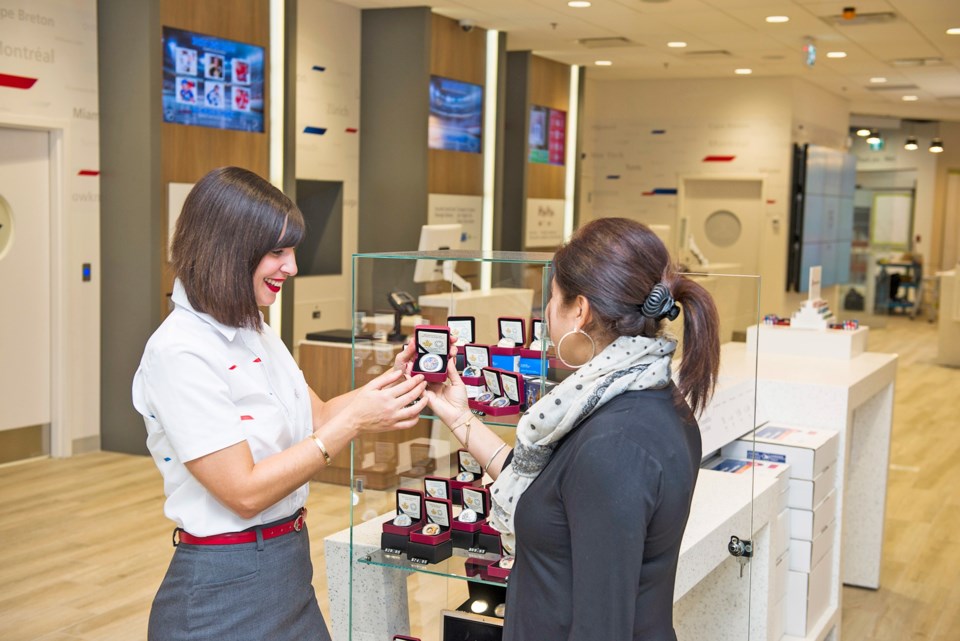People have been talking about the death of town centres for decades. Out-of-town malls pull away shoppers. Rents are prohibitively high. Millennials are too busy Instagramming to venture out of the house. And online shopping will have us all trying on clothes Jetson-like through VR headsets, as tumbleweed blows down Robson Street.
Yet according to data released last year by Statistics Canada, the e-commerce proportion of total retail sales in the first nine months of 2016 topped out at just 2.3 per cent in January. There’ve been some high-profile bankruptcies – Toys ‘R’ Us was a shock – and Robson Street has seen major closures including Gap and The Body Shop. But homegrown retailers including Aritzia, Oak + Fort and Saje Wellness, all of which have strong e-commerce, are opening stores all over the place. Vancouver’s department store scene – supposedly on its uppers for years – has seen a boost with the opening of Nordstrom and an ongoing major renovation for Holt Renfrew. And now, online-only brands are taking things into real life, including Clearly, Everlane, and the biggest fish of them all,
Amazon, which has eight bricks-and-mortar bookstores in North America and recently acquired Whole Foods.
“Amazon has been a disruptor to the [retail] industry... It represents all that online can provide in terms of possibilities,” says Darren Dahl, BC Innovation Council professor and senior associate dean and director of the Robert H. Lee Graduate School, UBC. “Its move into physical indicates that a mixed [digital and bricks-and-mortar] model has potential – at least at this point in time. Amazon experiments and pushes boundaries – one of the many reasons it is so successful.”
Keeping it real
What’s been the motivator for these online-only brands to move into reality? After all, surely it’s cheaper to have an online-only store, with no rents, taxes and overheads, and lower staffing costs?
It’s a question of scale. If you’re online only, there’s so much competition that it’s hard to differentiate yourself. That’s not necessarily a problem if you’re an Etsy shop that needs to sell a few hundred dollars worth of product to make a profit. But if you want to expand, you need a constant flow of new customers.
Indochino is a Vancouver-based company that makes made-to-measure menswear. It started online, but opened its first real-life store in 2014. Now, it has 17 showrooms across North America and has just opened a new head office at Granville and Robson, twice the size of the old one. “One of the challenges that most online-only businesses run into is the cost to scale,” says CEO Drew Green. “For example, Amazon is one of the best retailers in the world but had 17 to 19 years of being unprofitable because of the cost of acquiring customers. For us, retail has been the most efficient way to reach a new demographic. I can’t tell you what’s going to be the trend in retail in 10 years time, but one thing I’m confident in saying is that we’ll see very few online-only brands.”

Mixed messages
Green believes modern retailers need to offer a seamless and complementary blend of online and bricks-and-mortar retail. Real-life stores can offer experiences that online can’t, but need to be more efficient. Online stores have the efficiency, but need to include a personal touch. “We wanted to become an experience-based brand rather than a product-based one,” he says. “Shopping with us involves measurements, fabric choices, personalization and customization. You can do that online by yourself, or you can be guided through it by a style guide in the showroom. If you go get a suit from an off-the-rack or ready-to-wear store it’s a stale experience. For us, it’s entirely different: It’s appointment based, it’s one-to-one, and in up to four weeks you get a garment that fits you perfectly.”
Beauty brand Lush just reopened its expanded Robson Street store, which now has more space, a bigger focus on consultation, and the largest sink of any of its stores in North America – perfect for demo-ing bath bombs. “We’re focusing on expanding existing North American shops in order to heighten the customer service experience and provide more space for customers to get hands on with our continued product innovation,” says Brandi Halls, director of brand communications. “Creating a ‘sensory playground’ is something that we’ve become famous for the world over and, though it is costly, it’s something that we think is worth investing in for years to come.”

Online reality
And what about the flipside: replicating the real-life experience online? Lush is mainly trying to do so by incorporating more video on its website so you can see what its products do in real life. Halls says: “We are always looking for ways to elevate our digital experience because we know that so much of our brand needs to be experienced in person.” Amazon is trying to emulate the immediacy of bricks-and-mortar shopping with same-day delivery and is working on its Prime Air drone service. Most retail websites and apps now have online chat functions so you can get real-time assistance and guidance from a person, or book in-store appointments. And social media means customers can feel like they have real and significant relationships with their favourite brands – or can publicly call them out for anything from bad service to ethical issues.

Then there’s augmented reality, which allows you to try before you buy. Last year, Sephora launched its impressive Virtual Artist app, with which you can try on makeup looks and go through tutorials that show you how different techniques work on your own face. Apps have also been developed for trying on accessories, from scarves to engagement rings. However, the fashion industry at large hasn’t adopted these, and Dahl is skeptical, too. “People are trying to do all kinds of things to make online shopping close to the real thing. We might get to this Minority Report scenario eventually, but we’re a long way off,” he says. According to him, the crucial factor for online success is simply having a decent returns policy.
Social network
The final part of the shopping mix is the mall as meeting place, and shopping as entertainment and a social experience. Some e-commerce brands are trying to recreate that with community sections on their websites and apps, yet still we head to the high street.
“You journalists like to make it seem like the sky is falling in but in-person communication is always going to be important,” says Dahl. “We can say the end of movie theatres should have happened long ago but people still go to them. It’ll be the same for retail.”
Secrets to success
Mail order
One of the big beneficiaries in the rise in online shopping is Canada Post, which saw a 23 per cent rise in parcel volume in Q2 of 2017, versus the same period in 2016. To meet online shopping demands, it now has three concept stores including one at 495 Georgia St. These have fitting rooms that allow customers to try their online purchases on as soon as they receive them, and return them on the spot, a bit like... a shop.

Small wonder
Large chains can absorb Vancouver’s notoriously high commercial rents and taxes but indies can’t, which is why they’re a rarity in prime shopping spots like Robson Street and the Pacific Centre. “This city is a bit out of hand in terms of commercial real estate,” says Alexandra Thompson, co-founder of Gastown designer boutique Wardrobe Apparel. She believes service is the key to success for indie businesses. “I create quality relationships with my clients and most have turned into friends. We don’t try to compete with the big shops. We offer a very personalized service and our clients are very particular about how they want to be served,” she says.
As well as service, indie stores can offer the kind of quirky, unique or fashion forward product selection that big brands can’t – at Wardrobe Apparel, looks are hand-picked and pre-ordered straight from designers’ showrooms. What does the future hold for Gastown retail? “There is still a majority of independents in Gastown, so it has managed to keep its off-the-beaten path vibe – for now anyway,” says Thompson. “It is certainly bringing a different mood to the area as we see some bigger brands like COS show up.”



